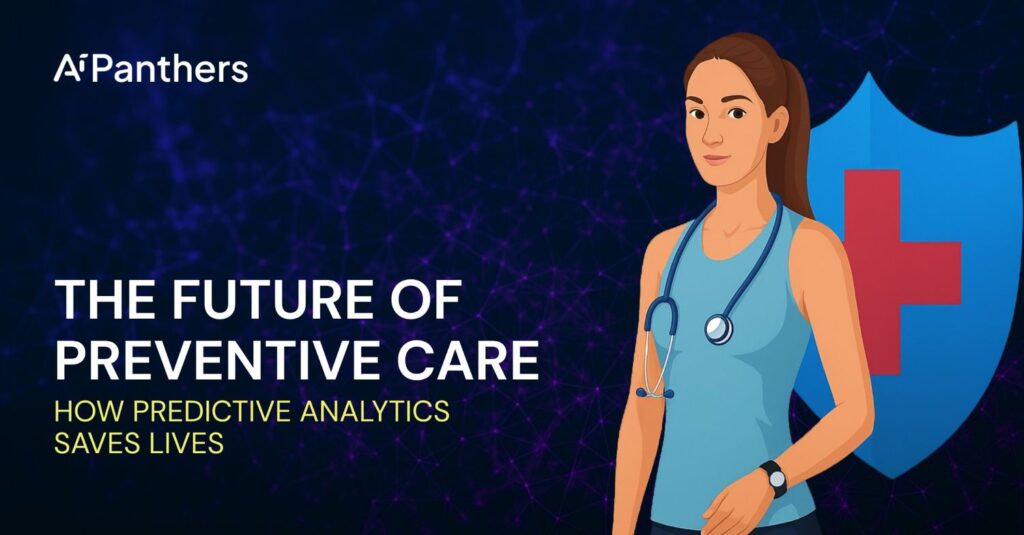
In healthcare, timing can mean the difference between a successful recovery and a critical emergency. What if we could foresee risks before they became problems? That’s precisely what predictive analytics is doing — transforming how healthcare systems approach prevention, treatment, and patient outcomes.
As hospitals and care providers shift from reactive care to preventive care, predictive analytics in healthcare is emerging as the backbone of this evolution. It empowers medical teams with foresight — the ability to detect early disease patterns, forecast readmissions, and personalize interventions for every patient.
At AI Panthers, we believe this isn’t just about technology — it’s about saving lives through data-driven precision.
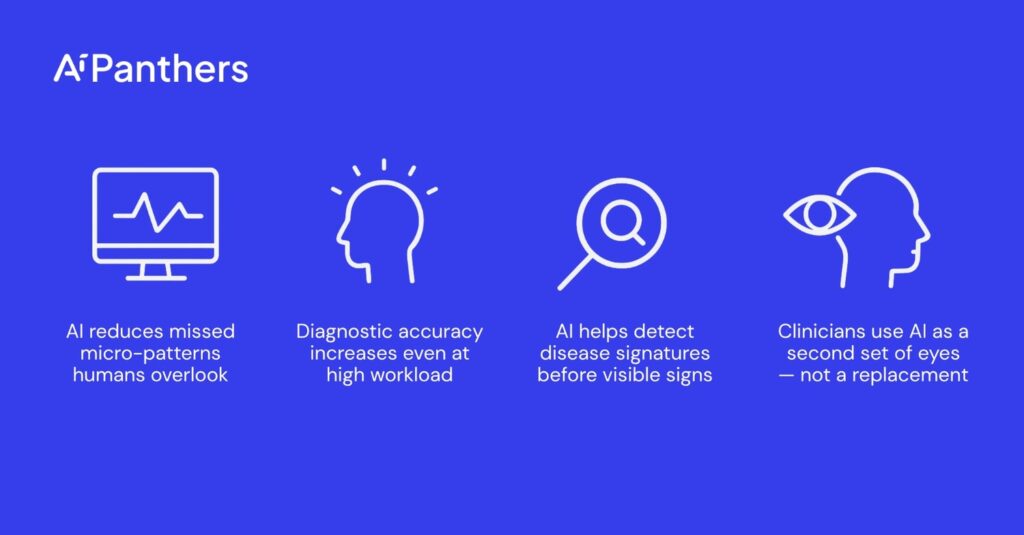
Predictive analytics uses AI models, machine learning algorithms, and big data to anticipate future events. In healthcare, this means predicting which patients are at risk of complications, relapse, or hospital readmission, enabling providers to intervene early.
These systems pull insights from electronic health records (EHRs), wearable devices, lab results, and even social determinants of health to uncover invisible risk patterns. The result? Clinicians gain a clearer view of patient trajectories long before symptoms worsen.
For example, a predictive patient analytics model might analyze years of historical data to identify which diabetic patients are likely to develop kidney issues over the next 6 months. Doctors can then take preventive action — adjusting medication, lifestyle guidance, or scheduling early check-ups.
This proactive care model improves outcomes, lowers hospital costs, and strengthens patient trust.
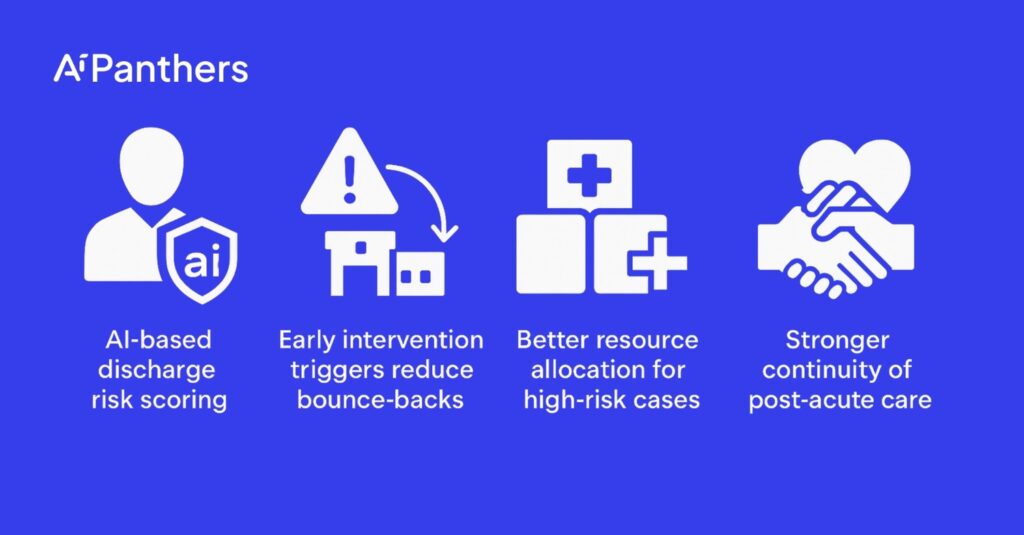
Hospital readmissions are one of the most expensive challenges in modern healthcare. Globally, unplanned readmissions cost the healthcare system billions of dollars each year. More importantly, they often indicate gaps in care continuity or unaddressed risk factors.
Predictive health models are changing that.
By combining structured data (vital signs, lab results) with unstructured data (doctor notes, discharge summaries), predictive models can calculate an AI risk scoring for each patient upon discharge. This score reflects the likelihood of readmission — guiding medical teams to tailor follow-up care accordingly.
For instance, if a patient is flagged as “high risk” for readmission after cardiac surgery, hospitals can proactively schedule remote monitoring, follow-up calls, or home nurse visits. On the other hand, lower-risk patients can be safely transitioned to standard care — optimizing resources and ensuring better outcomes for all.
Cleveland Clinic’s AI-powered system, for example, uses predictive analytics to identify ICU patients at risk of deterioration or readmission. The outcome? Significant reduction in complications and improved critical care response times.
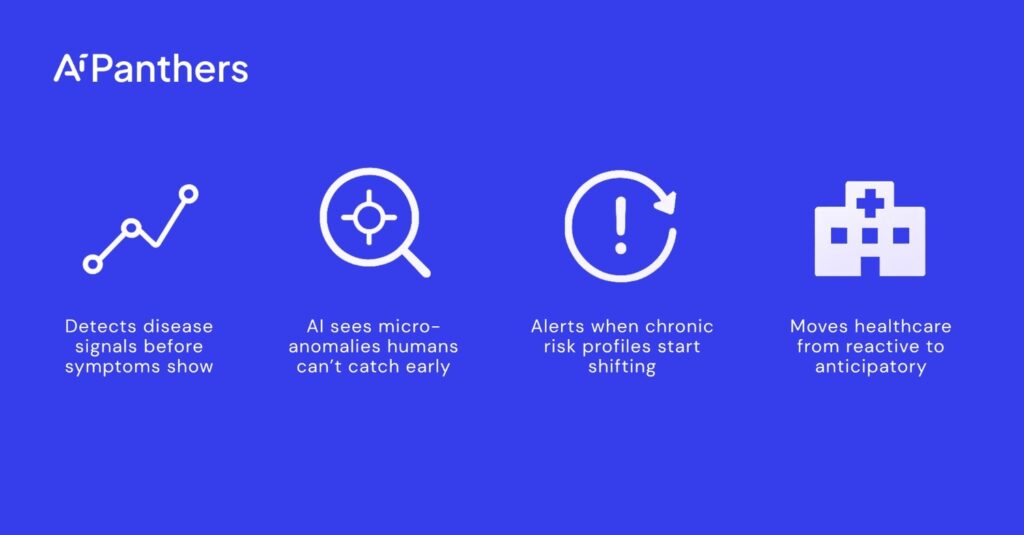
Early detection is where predictive analytics demonstrates its actual impact.
Traditional diagnostics rely on visible symptoms and lab results — but predictive analytics identifies patterns before these symptoms appear. By continuously analyzing patient data, AI models detect subtle deviations that humans might miss.
Take oncology. Predictive health models trained on vast imaging datasets can spot minute anomalies in radiology scans — often months before they would be noticeable to the human eye —resulting in earlier diagnosis, faster intervention, and dramatically improved survival rates.
Similarly, in chronic conditions such as diabetes or hypertension, predictive analytics can alert providers when a patient’s risk profile begins to shift, enabling medication or lifestyle adjustments to prevent escalation.
The synergy between AI diagnostics and predictive analytics ensures that healthcare becomes not just reactive, but anticipatory.
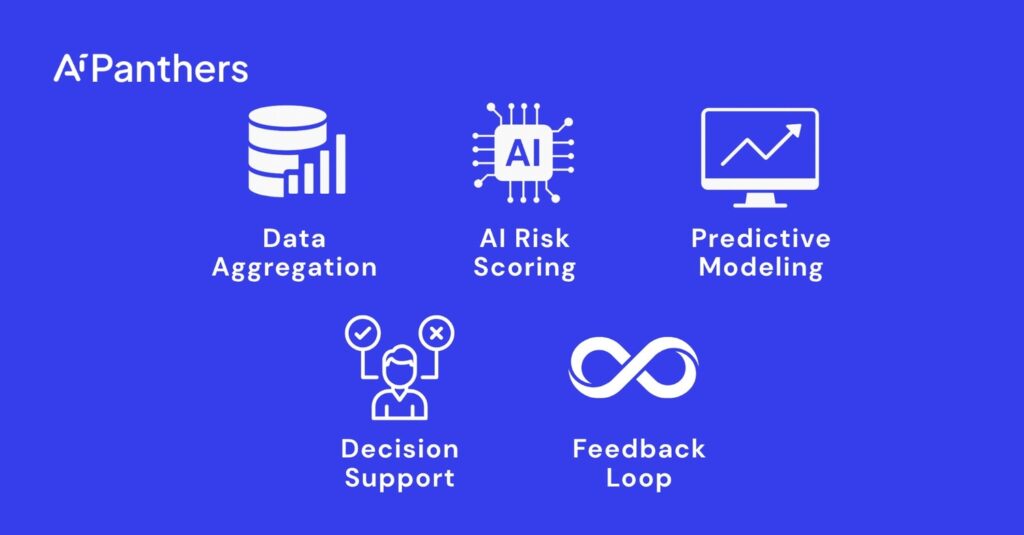
Predictive health models function through a cycle of data ingestion, training, and continuous learning. Here’s how:
This process ensures that the system isn’t static; it evolves with every patient interaction, continuously improving prediction accuracy and care personalization.
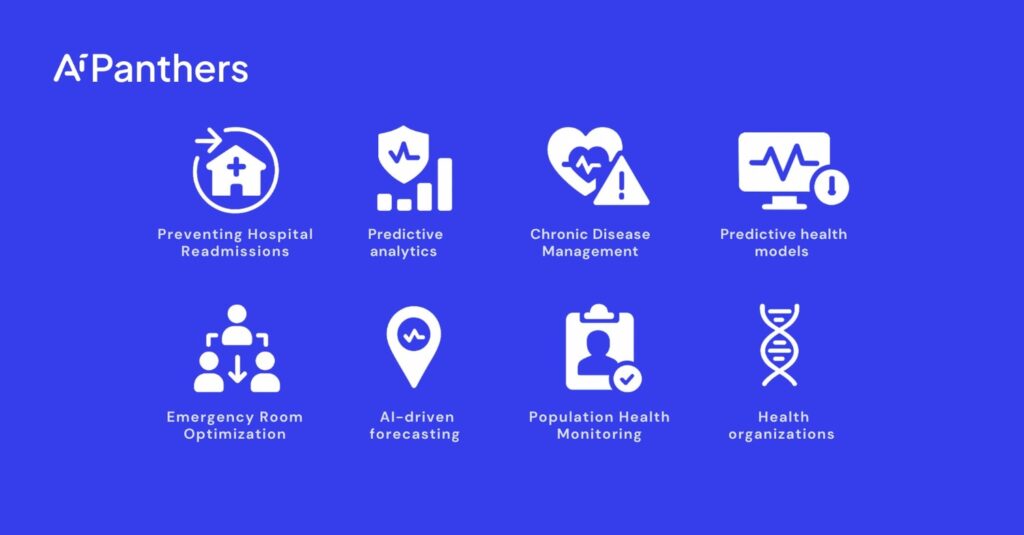
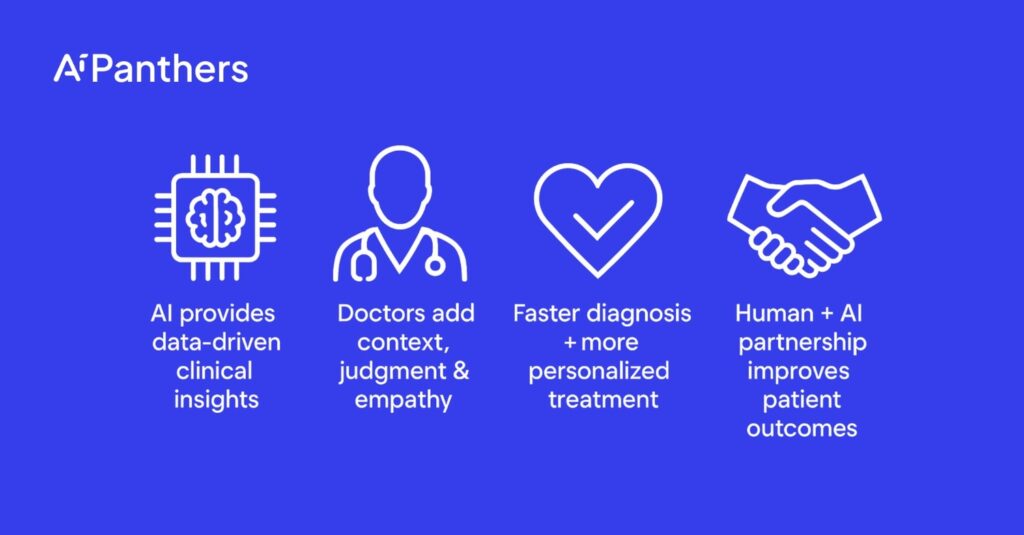
Predictive analytics doesn’t replace doctors — it enhances their ability to make informed decisions. By providing data-backed insights, it helps clinicians spend less time guessing and more time treating.
The key is collaboration. AI systems process billions of data points; doctors interpret those insights with empathy and context. Together, they form a powerful partnership — one that blends analytical precision with human compassion.
For patients, this means faster diagnosis, personalized treatment, and greater confidence in their care journey.
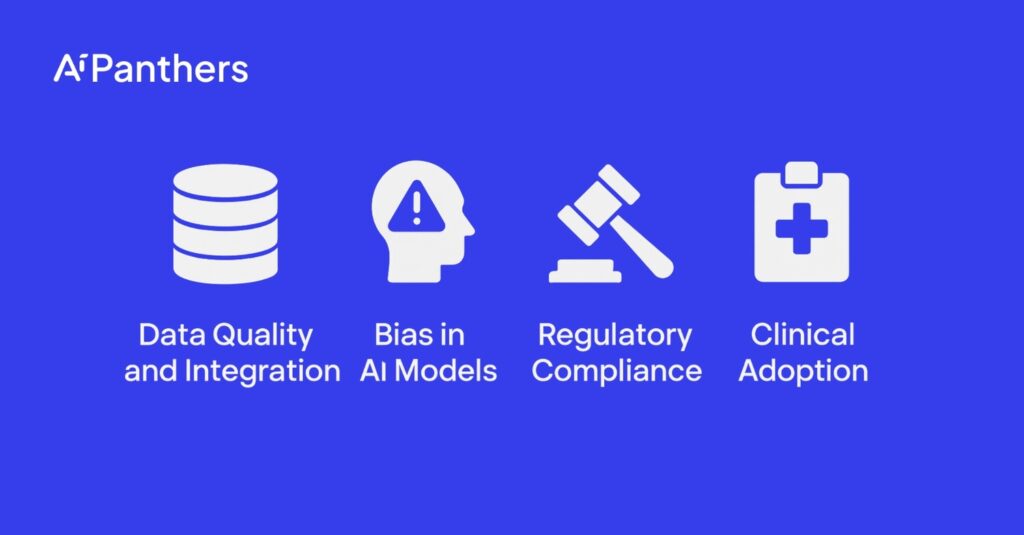
Despite its transformative power, predictive analytics faces challenges that need careful navigation:
As technology advances, these barriers are gradually being overcome. The next frontier lies in predictive health ecosystems — integrated systems that combine predictive analytics, diagnostics, and patient engagement into a seamless care continuum.
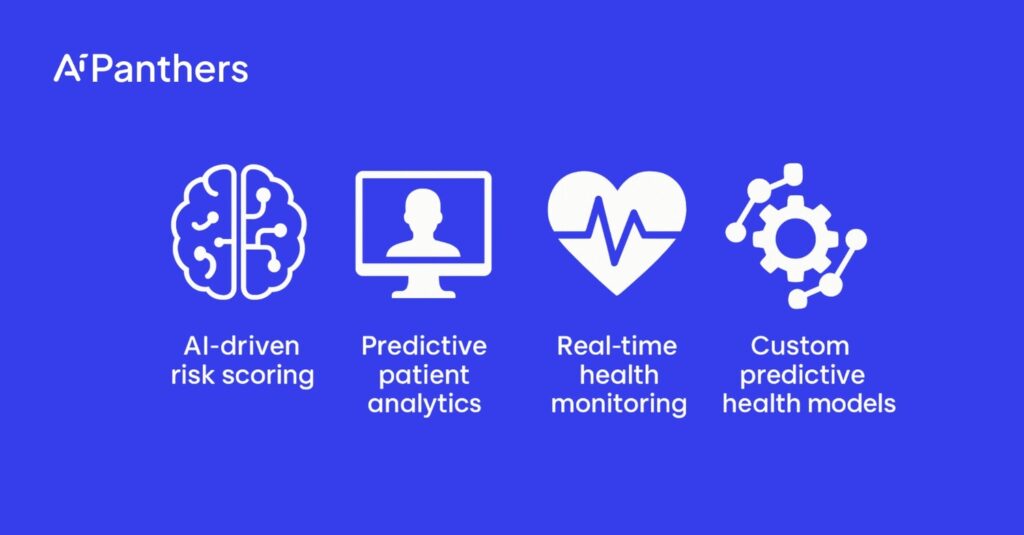
At AI Panthers, we’re building more than just software — we’re creating intelligent systems that empower healthcare providers to save lives with data-driven foresight.
Our predictive analytics solutions combine:
Whether you’re a hospital, insurer, or digital health startup, we help you transform raw data into meaningful clinical intelligence — enhancing accuracy, efficiency, and patient trust.
Because when healthcare becomes predictive, care becomes preventive.
The future of healthcare isn’t about reacting to illness — it’s about preventing it before it happens. Predictive analytics makes that future possible. From forecasting patient readmissions to detecting diseases early, it enables a shift from “treatment” to “prevention,” where technology and humanity work together to save lives.
With the right AI partner, healthcare organizations can move beyond data overload and into a world of precision-driven care — faster diagnoses, better outcomes, and healthier lives.
At AI Panthers, we’re not just imagining that future — we’re building it.
The argument in the midst of adjusting and timely technology in 2025 International Relations and Security Network Thymine Roundabout, the one which is better in general. It is roughly a comprehension of the context, constraints, and objectives of your activity.
Polish provides consistency, depth, and reliability, which is ideal for enterprise deployments. Prompt technology provides speed, flexibility, and efficiency, which is perfect for emerging companies, artists, and fast-moving crews.
Together, they constitute a spectrum of direct and innovative activity. They don’t compete with each other, although complementary devices, in the hands of skilled developers.
The real winner in 2025? The organizations that know how to wield both.